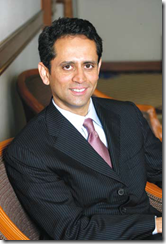Following years of false starts, the award of 3G spectrum finally took place in India earlier this year, with bidder appetite for broadband spectrum raising billions of dollars for the treasury. Comm. looks at the winners of both the 3G and broadband wireless access licences and assesses what direction the bidders’ strategic plans are set to take
 India is one of the fastest growing mobile markets, and with particularly low broadband penetration, stands to be a tremendous growth opportunity to operators and vendors alike
India is one of the fastest growing mobile markets, and with particularly low broadband penetration, stands to be a tremendous growth opportunity to operators and vendors alike
On May 19, India closed its 3G auction after 34 days and 183 rounds. The biggest winners were Aircel, Reliance and Bharti, with each gaining spectrum in 13 circles. Idea won spectrum in 11 circles, while Tata Teleservices and Vodafone were awarded spectrum in nine circles each. The provisional winning price per slot of 3G bandwidth amounted to INR 167.51 billion (US $3.7 billion), almost five times higher than the pan-India reserve price of INR 35 billion.
No single operator gained 3G access to all 22 of India’s telecom circles, while a total of INR 677.19 billion was raised from the auction, nearly double the projected amount. The two circles of Delhi and Mumbai together accounted for 39.19 per cent of the total money raised, while the top five circles – Delhi, Mumbai, Karnataka, Tamil Nadu and Andhra Pradesh – accounted for 65.56 per cent of the bids.
Breakdown of results by bidder
BSNL
While it did not participate in the 3G auction, BSNL will have to pay the Indian government INR 101.87 billion for spectrum in 20 of the 22 circles. Its costliest circles were Karnataka, Tamil Nadu and Andhra Pradesh.
Bharti Airtel
Will pay INR 122.95 billion for spectrum in 13 circles, the most amount spent by an operator in the 3G auction. In a statement, Airtel said it wanted to achieve a pan-India 3G footprint, but could not, due to “the auction format and severe spectrum shortage along with ensuing policy uncertainty”, which drove the prices beyond reasonable levels.
Reliance Communications
Will pay INR 85.85 billion for spectrum in 13 circles. It won 3G spectrum in all circles where it has 900 MHz spectrum. Reliance claims to be the only operator that has pan-India 3G capability in CDMA and among the top three with the highest coverage in WCDMA .
Aircel
Won spectrum in 13 circles for INR 64.99 billion, the least cost per circle.
Idea Cellular
Won spectrum in 11 circles for INR 57.68 billion, though it did not win in Delhi and Mumbai.
Vodafone
Was awarded spectrum in nine circles for INR 116.18 billion, and spent the second highest amount in the auctions.
Tata Teleservices
Will pay INR 58.64 billion for spectrum in nine circles.
S-Tel
S-Tel won spectrum in three circles for INR 3.38 billion.
MTNL
Though it did not participate in the 3G auction, MTNL will have to pay INR 65.64 billion for spectrum in the two cities of Delhi and Mumbai. It counted a fairly low 3G subscriber base at the end of March, numbering just 348,000, despite having launched services a year ago.
Broadband Wireless Access (BWA) licences
On June 12, the government of India formally approved results of the BWA auction, stating the winners needed to pay the licence fees by June 22.
The auction for spectrum ended June 11, garnering a total amount of INR 385.43 billion.
The price of the pan-India licence stood at INR 128.48 billion at the end of the 16-day auction, which constituted 117 rounds in which 11 companies participated. These were: Bharti Airtel, Reliance WiMAX, Idea Cellular, Aircel, Augere Mauritius, Infotel Broadband Services, Qualcomm, Spice Internet Service Provider, Tata Communications Internet Services, Tikona Digital Networks and Vodafone Essar.
The government of India had already allocated one block each of 20 MHz unpaired spectrum to MTNL and to BSNL in their respective service areas, while Infotel went on to win licences in all of India’s 22 circles and shortly after the conclusion of the process, Indian conglomerate Reliance Industries Ltd. (RIL) announced it would acquire.
Infotel for around US $1 billion with plans to take a leadership position in the Indian broadband market. The company plans to deploy LTE infrastructure rather than WiMAX.
The BWA auction – in which two slots of 20MHz capacity in the 2.3GHz band were offered in each of the 22 circles – was hotly contested, with Aircel being awarded spectrum in eight circles, Tikon in five; Qualcomm and Bharti in four each; and Augere emerging as the winner in one circle.
 Tata Communications’ Kumar believes it will be hard for BWA spectrum winners to make a viable business case of their operations given what they paid in the auction
Tata Communications’ Kumar believes it will be hard for BWA spectrum winners to make a viable business case of their operations given what they paid in the auction
Qualcomm has evolved to become a telecom chipset and technology supplier like no other given its forays into spectrum auctions in markets such as the US and Japan, where it has then gone on to develop and deploy its MediaFlo mobile TV service. Qualcomm’s purpose for acquiring BWA spectrum in India is different, with the San Diego-based company having stated its intention to build out a TD-LTE network with local partners.
Qualcomm has said its plan would be to exit the venture in India at some point in the future, though the entity would look to liaise with 3G spectrum owners in the principal metro centres of New Delhi and Mumbai, with Haryana and Kerala. Foreign companies operating in India’s telecom sector are allowed to own up to 74 per cent of their entities, and Qualcomm expects to announce its partners as early as July.
“We will be announcing our partners in about a month’s time,” commented Kanwalinder Singh, president of Qualcomm India and South Asia, shortly after Qualcomm had been confirmed as the winner of BWA spectrum. “We believe that a chunk of 3G spectrum will be used for voice by the winners and, in this scenario, they would need spectrum to cater to the data requirements. It is here our spectrum will be used.”
Qualcomm plans to perform a live demonstration of TD-LTE before the end of the year. “There has been speculation in the market that LTE technology is not ready – this is our way of responding to this speculation,” Singh said.
Infotel Broadband Services also plans to deploy a LTE network, making it a premium broadband provider in the country. However, not all participants in the BWA auction believe that the amounts bid reflected value for money. Vinod Kumar, chief operating officer of Tata Communications was clear in his assertion that the prices at which BWA spectrum was ultimately awarded was too high.
“We are disappointed with the outcome of the BWA auction,” Kumar told Comm. “However, we firmly believe that the winning bids cannot have a viable business case for broadband behind them. We stepped out of the race when we felt that the prices reached (and surpassed) levels that made economic and good business sense.”
Tata Communications had entered the BWA licence award process with the view to further developing its broadband presence in India, which is aimed primarily at the data business market.
“At these prices, the market dynamics will force greater unbundling and wholesaling of the last mile. Hence we believe that our business will not be impacted in any way, especially in the enterprise space,” Kumar said.





1 comment so far ↓
MTNL is a sister concern company of BSNL and comes under Central Govt. The customer base of MTNL is nearly 5.92 million. And from past few years the graph is going down even if the Indian Govt. is spending too much to uplift the customer base, but still the graph is going down and the main reason are their “great services”. The MTNL linemen don’t have enough ideas to configure even a modem and to solve a single complaint they take nearly one month or more because they don’t have enough workforce and the coverage area is very large. And when you see the MTNL exchange you become shocked to see their exchange, made of Huwaei equipment, and when you see the Airtel exchange you will find Ericsson equipment because the cost of Huawei equipment is nearly half of Ericsson’s.
Basically they have two types of exchange; one is for 256 Kbps and one for above 256Kbps. If you buy the plan for above 256 Kbps then you may receive a good response because for that they only use the Ericcson exchange.
I raised my voice at Consumer Court and submitted an online complaint and found that I am not the only one who is facing the problems with MTNL http://www.consumercourt.in/broadband/1-mtnl-broadband.html
I don’t know why the Govt. changed the plan to get more customer and spend a huge amount in ads, the salary of lineman is nearly 15000/-, I think this is a total waste. Customers are very frustrated with MTNL. If you visit the MTNL exchange you will find many customers shouting at the area manager. My personal experience with MTNL was pathetic and I switched to another services provider and am much more satisfied.
Leave a Comment